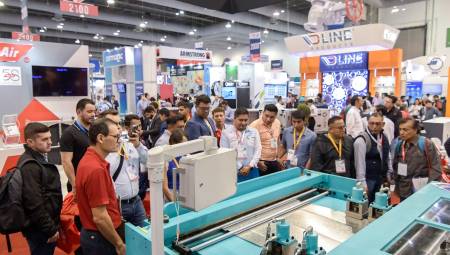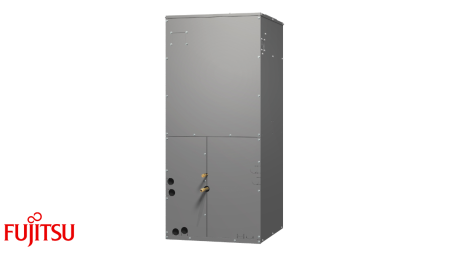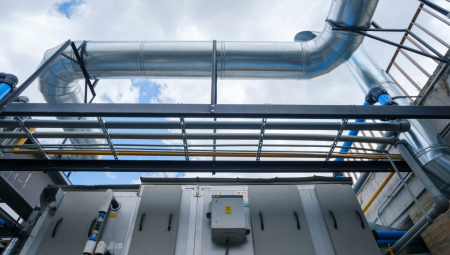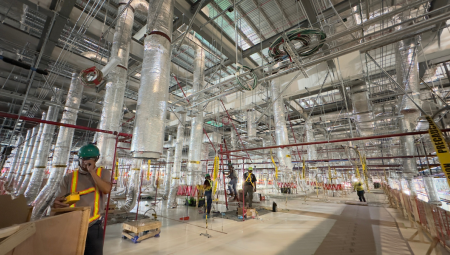 Working within the range of operations in compressors can make a difference in terms of a long service life and correct operation of the same, not doing so, can have serious consequences.
Working within the range of operations in compressors can make a difference in terms of a long service life and correct operation of the same, not doing so, can have serious consequences. By: Santiago Jaramillo H.
During the sixth version of Refricolombia, held last July in the city of Bogotá, one of the academic talks with the greatest impact on the audience was the one guided by the engineer Fernando Becerra Ariza, sales manager of the Danfoss company in Colombia and Ecuador, and which was called "Consequences of working outside the range of operation in compressors". Given this positive acceptance, the magazine ACR LATINOAMÉRICA will share in this edition with all its readers a complete report of what this was, thanks to the special collaboration of the speaker.
To start the compendium of the talk, our guest warns about what are the main problems that can affect a compressor when working outside the range. It also ensures that working within the range of pressures and temperatures in a compressor is the guarantee to ensure optimal operation and long service life.
According to Becerra, the main damages that occur in these equipment are "the high pressures in suction forcing the electric motor to high loads out of design, causing its breakdown. The low suction pressure, in some cases exceeds the compression ratios of the coolant causing high discharge temperatures, also causing oil burning and creation of acids that attack the varnish of the engine and end with its electric burning. In the case of scroll type compressors the operating range of some models must be respected to operate only in high as indicated by its manufacturer. Another damage is high discharge pressures, caused by poor condensation or high refrigerant charge, causing an increase in energy consumption. Likewise, the low discharge pressures, product of low ambient temperatures, incur in pressure drop in the expansion valve decreasing, in passing, its filling capacity".
Return of liquids
Already moving on to specific issues such as the causes of the return of liquids and their possible solutions, the representative of the company Danfoss indicated that "first of all it must be verified that there is indeed a return of liquid to the compressor, the total overheating of the system must be measured (evaporation temperature - temperature 30 centimeters before the compressor) if its value is zero the refrigerant reaches the compressor liquid (verify it with the oil viewer). of the same, which will present foam)".
As far as determining the reasons for a liquid return is concerned, our expert recommends following, in your order, the following discard procedures:
- Verify that the evaporator is not blocked from ice.
- Check that the evaporator fans are operating.
- Discard high refrigerant charge, confirm that the high pressure is correct according to the type of condenser and ambient temperature. In this case the viewfinder will be 100% liquid filled.
- Check if the expansion valve is large, this will be determined according to the operating conditions and thermal load.
- Check the low thermal load in the system, if it has all its elements sized for a given thermal load and is subjected to one of 20 or 30% below its design, the thermostatic valve will not maintain an overheating in the evaporator generating liquid return, not being so if electronic expansion valve is used.
If all of the above is correct, the conclusion is that the evaporator is undersized. Before completing the refrigerant charge, the system will return liquid to the compressor.
Overheating in compressors
As Becerra acknowledges, "the consequences of high overheating are high discharge temperatures and an increase in the energy consumption of the system. If the coolant overheats, the cooling of the compressor's electric motor is deficient, causing it to be triggered by thermal repeatedly. Likewise, the discharge increases its temperature, if we are close to the maximum compression ratio of the refrigerant, it will exceed 120° C in the discharge causing the burning and formation of acidity in the oil. "
Meanwhile, and as our guest warns, "the increase in energy consumption is due to the decrease in the density of the refrigerant when it is overheated, as a consequence the displaced mass is lower and the compressor must operate longer to meet the temperature of the system".
As for the characteristics that must be given for a good compression ratio, the sales manager of Danfoss assures that "respecting the limits of each refrigerant to avoid high discharge temperatures, being critical the R22, and not exceeding the compression ratio of the compressor design, usually they are usually in 12: 1", would be good practices.
On the other hand, Becerra said that to maintain the operating range of the compressor according to the refrigerant used "the main thing is to preserve its initial design, but it is very important that maintenance guarantees it. In addition, the pressures must be maintained in their compressor operating range and, in turn, the total controlled overheating inside the evaporator at 5°C and outside the evaporator as small as possible, so that the total SH is less than 20°C."
Lubrication problems
Another topic highlighted by Becerra Ariza during his conference at Refricolombia 2009 were the factors that can cause lubrication problems and a decrease in the useful life of the compressor, so our guest presented the following problems.
- Very high or low level of lubrication, maintaining the level at 1/2-3/4 of the visor and ensuring cleanliness and quality of the oil are key.
- Poor pipe design or poor design of rack level control systems cause a lack or excess of oil in the compressor.
- Lack of oil: product of no return due to suction diameters or large discharges, high overheating, large return traps, etc.
- Excess oil: due to high oil load, sudden oil returns in systems that accumulate it in evaporators or pipes, or poor installation of the level control system in racks, etc.
As a consequence of the above factors there will be a decrease in the life of the compressor or immediate damage.
Poor cleanliness and moisture in the system
When asked about the consequences of poor cleaning of the compressor, Becerra stressed that the most frequent are "the cuprous oxide produced at the time of welding without nitrogen flow, plus all the cutting and dirty particles that go to the shell of the compressor scratching and braking its moving parts, so it is necessary that a suction filter is always installed to eliminate this problem that is very frequent in our environment".
In the case of the recommendations to avoid moisture in the system, the Danfoss representative indicated that the key is in the "initial cleaning of exchangers and pipes, use of filter dryers and not exposing the oils and system to the environment for more than five minutes."













